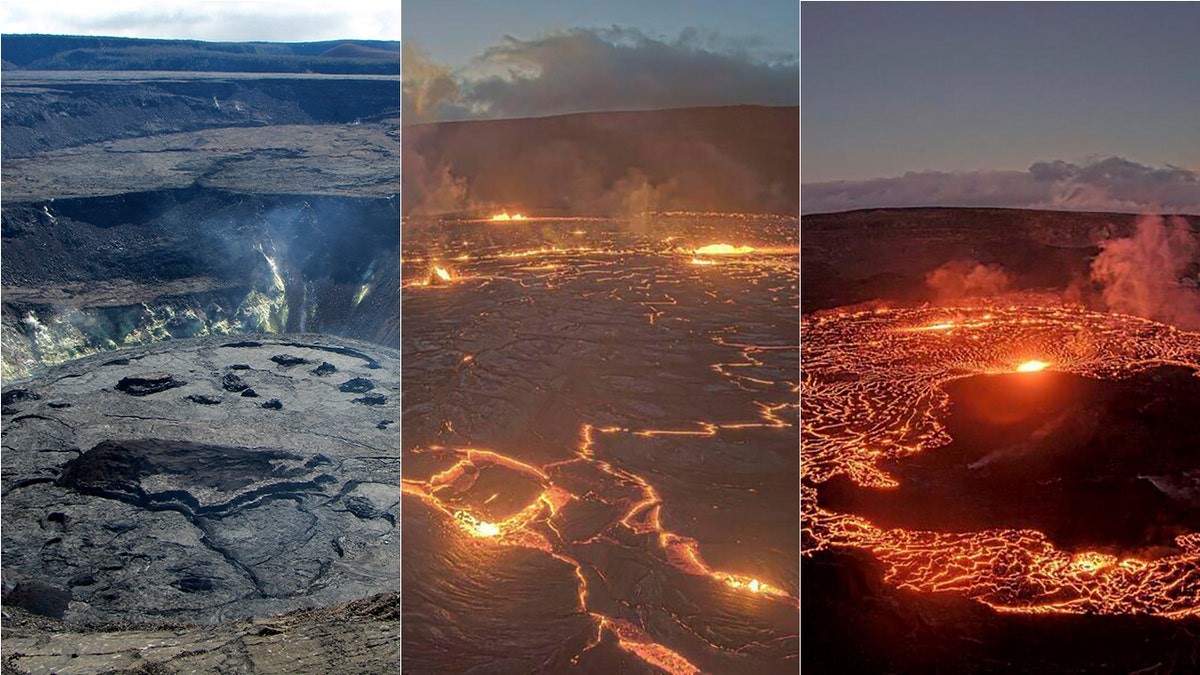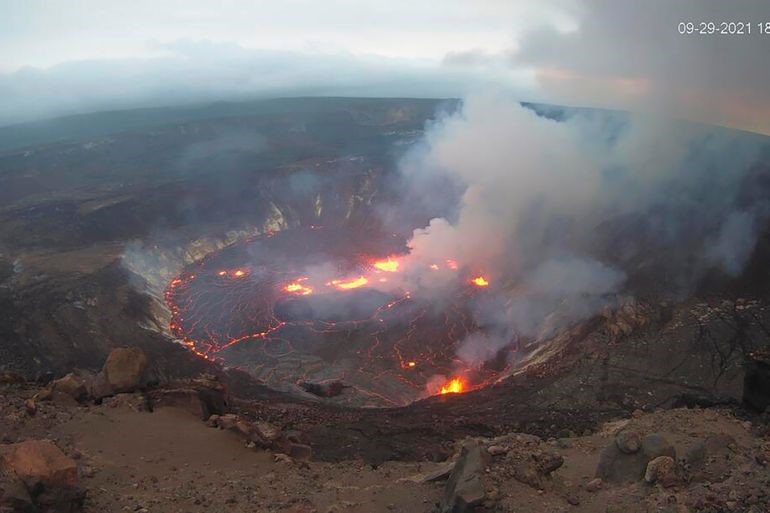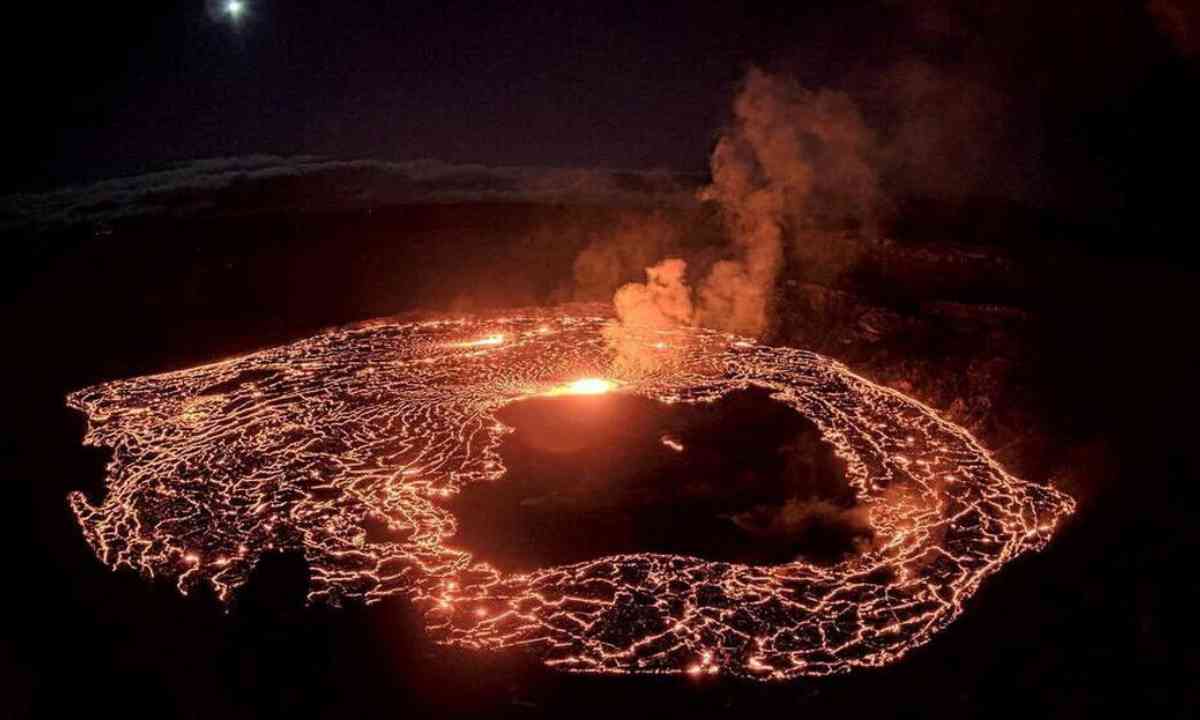After a few weeks of intermittently elevated seismic activity and gas output, the Kilauea volcano began erupting in the Halema'uma'u crater on January 5, 2023, at approximately 4:34 p.m. HST.
Within the crater, the eruption is characterized by multiple active fountains of lava, the largest of which can reach heights of approximately 10 meters (33 feet). Since the summit of Kalauea is currently uninhabited, there are no reports of significant hazardous effects from this eruption.

Kīlauea is an active shield volcano on the island of Hawai'i, and is the most active volcano in the state of Hawaii. Kīlauea is located in the Hawai'i Volcanoes National Park and has been continuously erupting since 1983. The volcano is known for its frequent and often spectacular eruptions, which have included lava fountains, lava flows, and ash plumes.
Kīlauea is considered a very active volcano, with frequent eruptions and frequent changes to the shape of the volcano's summit and rift zones. The volcano is considered sacred by the native Hawaiian people and has a long cultural and historical significance. Kīlauea is home to a number of unique and endangered species, including the nēnē (Hawaiian goose) and the ōhia lehua, a flowering tree that is found only on the island of Hawai'i. The volcano has a number of active lava flows and vents, including the Pu'u 'Ō'ō vent, which has been erupting continuously since 1983.

Kīlauea is monitored closely by the Hawaiian Volcano Observatory, which provides regular updates on the volcano's activity. The volcano has had several major eruptions in recent history, including a major eruption in 2018 that destroyed over 700 homes and caused significant damage to the island's infrastructure.
Kīlauea is a popular tourist attraction and attracts visitors from around the world who come to witness its dramatic eruptions and experience the unique landscape of the island.
Currently, the eruption is producing a significant amount of steam and volcanic gases, including sulphur dioxide, which may present a health risk to communities in the vicinity. The Hawaiian Volcano Observatory and the National Park Service are keeping an eye on the situation.
© Vygr Media Private Limited 2022. All Rights Reserve

























